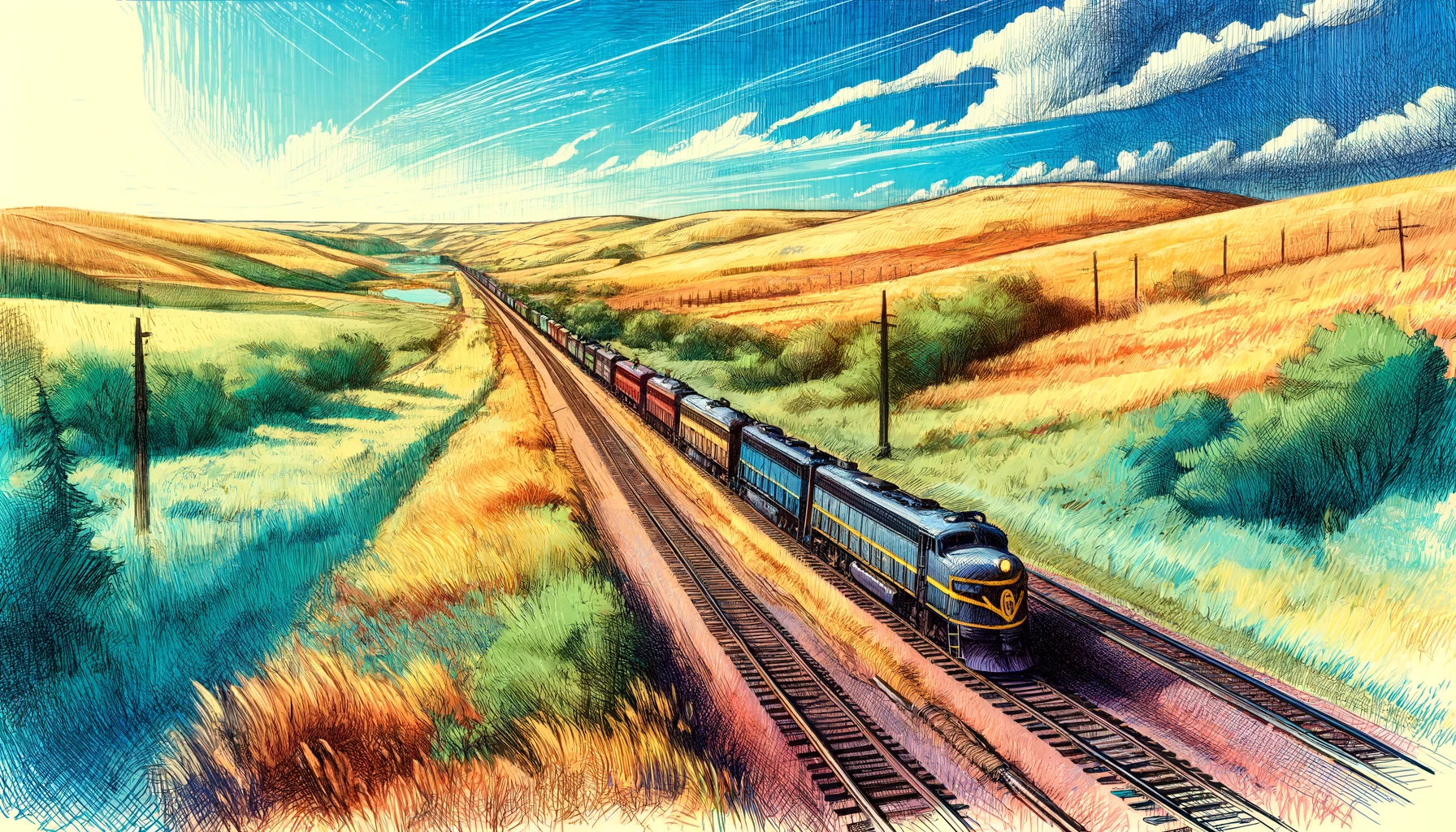Brine Ponds Ecosystems of Nebraska

Traveling through Nebraska, one often comes across peculiar landscapes that are pivotal in understanding the state's biodiversity. Among these unique ecosystems are the brine ponds, saline lakes that host an array of flora and fauna. Situated along the Platte River Valley and other regions, brine ponds of Nebraska are shallow pools of high-salinity water that sustain microorganisms, invertebrates, and migratory birds.
These brine ponds are formed through the leaching of underlying rocks, which seep minerals into the surrounding water, increasing its salinity levels. This phenomenon results in unique terrestrial and aquatic life that thrive in environments where others would perish. For instance, the saline wetlands near Saline Wetlands Conservation Partnership, approximately 15 miles north of North American central latitude, exhibit a remarkable density of migratory waterfowl. The combination of brine ponds and adjacent wetlands support an intricate web of food sources and microhabitats, essential for the survival of these avian species.
Some notable examples of brine ponds in Nebraska include the Funk Water Bird Production Area, positioned near downtown Kearney, and the Crescent Lake National Wildlife Refuge, which spans along the Keith County and Garden County border. These refuges showcase the heterogeneity of brine pond ecosystems, varying from fresh to hypersaline conditions, and facilitate complex interactions among their indigenous flora and fauna.
Studies have demonstrated that Nebraska's brine ponds are some of the most species-rich environments in the state, often exhibiting higher plant and animal diversity compared to adjacent terrestrial habitats. Noteworthy species, such as the threatened whooping crane, the endangered piping plover, and various songbirds rely on these vital freshwater and brine habitats for essential migratory stopovers. Therefore, continued conservation and preservation efforts are essential to maintaining the integrity and ecological balance of these sensitive environments.
Ongoing research on brine ponds has shed light on the essential roles these ecosystems play in mitigating habitat loss and fragmentation for species migrating through and inhabiting the regions surrounding these brine ecosystems. Subsequently, state-wide initiatives such as the Nebraska Sandhills Preservation Plan are undertaking efforts to stimulate innovative land-use planning and land management practices to foster resilience across this iconic region.
Organizations like Ducks Unlimited and the Nebraska Natural Resources Commission work in tandem to develop effective land-use strategies that restore habitats and replenish wetland functionality along waterways like the Sandhills and Nebraska River. The adoption of carefully designed silvopastoral and rotational grazing systems offer means of facilitating habitat conservation that benefit both wild and domesticated species.
Consistent improvement and preservation of Nebraska's brine pond ecosystems rely on responsible water management and sustainable agricultural practices. Consequently, educating the public on the consequences of pollutions, fertilizers and altered water circulation to wetlands can significantly enhance habitat perseverance through a protracted environmental commitment from local communities.
As one ventures through Nebraska, embracing the rare opportunity to witness brine ponds firsthand provides an immersive window into some of our planet's resilient ecosystems and serves as a poignant reminder of our collective responsibility for preserving and understanding these natural treasures.
These brine ponds are formed through the leaching of underlying rocks, which seep minerals into the surrounding water, increasing its salinity levels. This phenomenon results in unique terrestrial and aquatic life that thrive in environments where others would perish. For instance, the saline wetlands near Saline Wetlands Conservation Partnership, approximately 15 miles north of North American central latitude, exhibit a remarkable density of migratory waterfowl. The combination of brine ponds and adjacent wetlands support an intricate web of food sources and microhabitats, essential for the survival of these avian species.
Some notable examples of brine ponds in Nebraska include the Funk Water Bird Production Area, positioned near downtown Kearney, and the Crescent Lake National Wildlife Refuge, which spans along the Keith County and Garden County border. These refuges showcase the heterogeneity of brine pond ecosystems, varying from fresh to hypersaline conditions, and facilitate complex interactions among their indigenous flora and fauna.
Studies have demonstrated that Nebraska's brine ponds are some of the most species-rich environments in the state, often exhibiting higher plant and animal diversity compared to adjacent terrestrial habitats. Noteworthy species, such as the threatened whooping crane, the endangered piping plover, and various songbirds rely on these vital freshwater and brine habitats for essential migratory stopovers. Therefore, continued conservation and preservation efforts are essential to maintaining the integrity and ecological balance of these sensitive environments.
Ongoing research on brine ponds has shed light on the essential roles these ecosystems play in mitigating habitat loss and fragmentation for species migrating through and inhabiting the regions surrounding these brine ecosystems. Subsequently, state-wide initiatives such as the Nebraska Sandhills Preservation Plan are undertaking efforts to stimulate innovative land-use planning and land management practices to foster resilience across this iconic region.
Organizations like Ducks Unlimited and the Nebraska Natural Resources Commission work in tandem to develop effective land-use strategies that restore habitats and replenish wetland functionality along waterways like the Sandhills and Nebraska River. The adoption of carefully designed silvopastoral and rotational grazing systems offer means of facilitating habitat conservation that benefit both wild and domesticated species.
Consistent improvement and preservation of Nebraska's brine pond ecosystems rely on responsible water management and sustainable agricultural practices. Consequently, educating the public on the consequences of pollutions, fertilizers and altered water circulation to wetlands can significantly enhance habitat perseverance through a protracted environmental commitment from local communities.
As one ventures through Nebraska, embracing the rare opportunity to witness brine ponds firsthand provides an immersive window into some of our planet's resilient ecosystems and serves as a poignant reminder of our collective responsibility for preserving and understanding these natural treasures.
